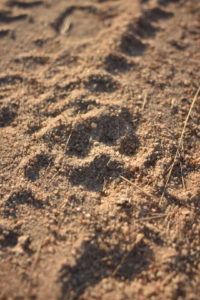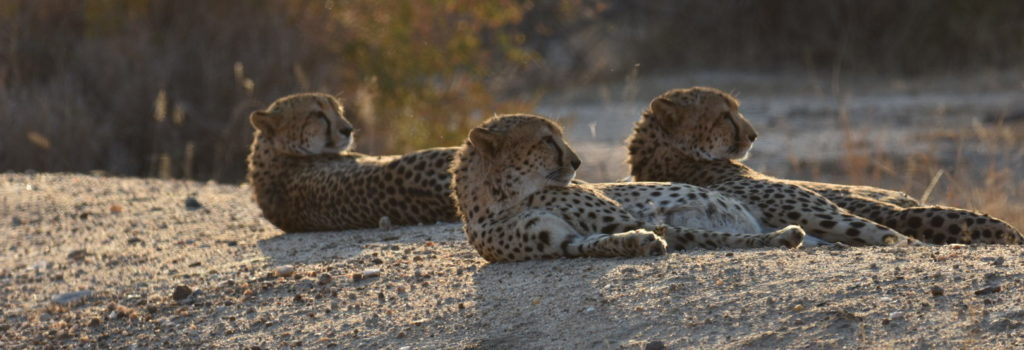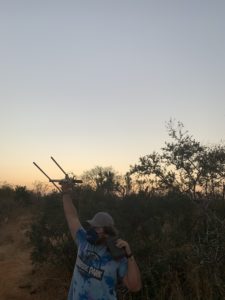Discover how Namib Desert wildlife thrives in extreme conditions – elephants, beetles, plants & more adapt uniquely to survive harsh environments.
GVI
Posted: July 9, 2024

Posted: July 19, 2021

Tracking animals on a private game reserve with an area of 85km2 can take many different forms. Using a wide array of tacking techniques, reserve management and conversationalists can gather information about big focus species such as lion and cheetah, as well as the more elusive aardvark, rhino, and wild dogs. To follow the day-to-day movements of the main focus species the GVI Limpopo Wildlife Research team based in the Limpopo province of South Africa use old-school natural track and sign as well as telemetry devices. The team also uses the technique of camera trapping to catch not only focus species but to sometimes get the only data available on species usually too elusive to find by car or track on foot.
While on game drives track and sign techniques and telemetry may be used daily. Every tour guide on the reserve is trained in the art of track and sign. This is especially useful in tracking and keeping up-to-date records on the health and well-being of the cheetah. Finding their footprint tracks on the ground and correctly being able to interpret not only which direction they are heading but how recent they were there and knowing the difference between a cheetah, leopard, and hyena track are crucial. At GVI Limpopo, the team frequently tracks a coalition of three cheetah brothers who are always together. Even though at one time they were almost guaranteed to be along the fence line in the reserve, recently the brothers have begun changing their movement paths, expanding throughout all edges of the reserve.


Given that these brothers are such an important part of the conservation mission of the Endangered Wildlife Trust’s (EWT) Carnivore Conservation Programme, keeping the genetic population of cheetah healthy not only on the reserve but in the whole of South Africa means it is important to keep up with their general health and safety on a reserve that also hosts so many competing big cats, especially leopards and lion.
Along with natural tracks on the reserve the GVI Limpopo research team also has access to telemetry devices which are mainly in use to track the adult male lion on the reserve. This male is not only important as a photographic tourism draw to the reserve which increases the conservation budget but also as a very successful breeding male. Telemetry is very crucial when used on such an important individual that commands such a large territory. Using a sub-dermal implant that was surgically placed in the dominant male the team can use the VHF telemetry device to track and keep current records on his health and movement. When using the telemetry device, a receiver is hooked up to an antenna that is extended into the air by hand to listen for “beeps”. Once the antenna is raised into the air it is then moved in a 360-degree motion while listening for a beep to come out through the static sound produced by the receiver. Then to track the animal with the transponder on them you follow the direction of the loudest beeps.

Finally, the last method the GVI team use is camera trapping. By setting up camera traps at ideal locations throughout the reserve the team here can gather data on the focus species but also record the happenings of more elusive species that make their home on the reserve. Some important animals that live here are especially cryptic, which makes it difficult to track in the traditional sense, and results in few sightings when driving around in the vehicle. These animals can include the spotted hyena and the aardvark – which is a crucial ecosystem engineer and helps promote so many other populations to flourish.

Discover how Namib Desert wildlife thrives in extreme conditions – elephants, beetles, plants & more adapt uniquely to survive harsh environments.
GVI
Posted: July 9, 2024